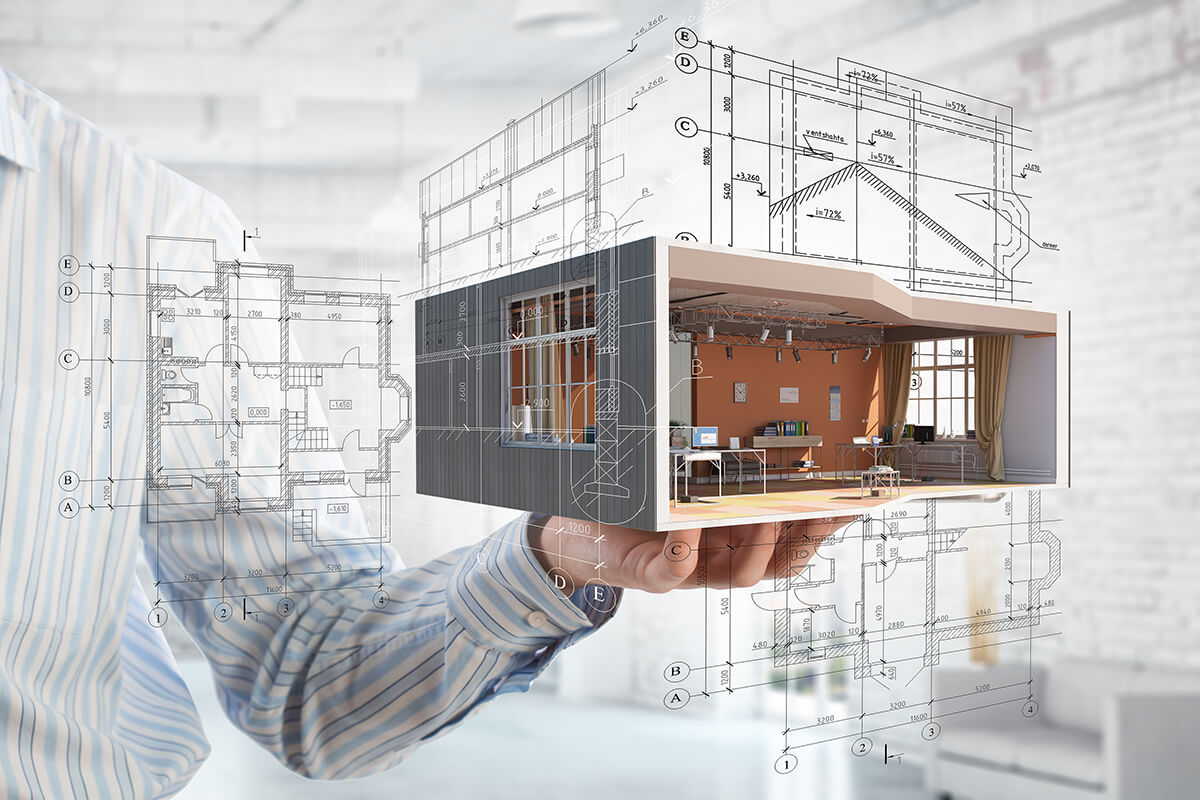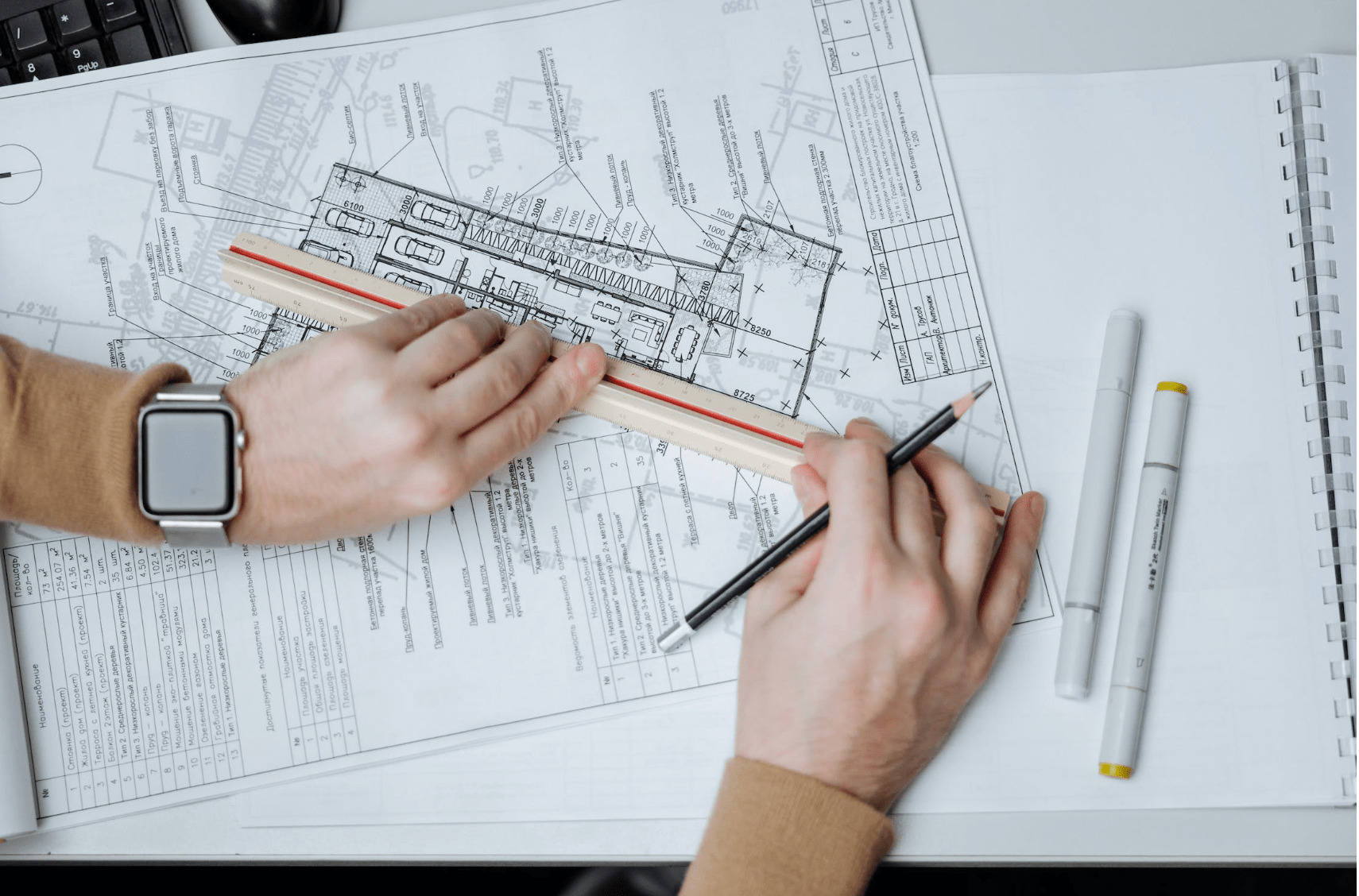Architect Advice on Maximizing Compact Urban Spaces
Architect Advice on Maximizing Compact Urban Spaces
Blog Article
Comprehending the Diverse Profession Paths Available for Aspiring Architect
As an aspiring Architect, you have a world of profession courses awaiting you. Each course uses one-of-a-kind obstacles and opportunities to use your creative thinking and technical expertise. Whether you're attracted to typical design or the nuances of sustainable layout, there's a niche that aligns with your passions. Recognizing these varied options can shape your professional trip, but which instructions will you select to discover first?
Standard Style: Designing Structures and Frameworks
Traditional architecture concentrates on designing structures and frameworks that blend performance with aesthetic allure. As you discover this field, you'll appreciate the detailed balance between form and objective. You'll find out to draw motivation from historic designs, integrating elements like proportion, products, and craftsmanship. Your styles can mirror social heritage, showcasing regional practices while satisfying contemporary demands.
You'll develop abilities in composing, model-making, and website evaluation, allowing you to imagine and communicate your concepts successfully. Involving with clients, you'll need to understand their vision and convert it into practical designs.
Moreover, developing codes and sustainability practices are crucial in your job, ensuring your frameworks are secure and eco-friendly. As you expand in your occupation, you'll locate opportunities in residential, business, or perhaps restoration projects, each offering special challenges. Accepting typical architecture paves the method for a fulfilling occupation that pays homage to the past while forming the future.
Urban Preparation: Shaping Areas and Public Spaces
As an aspiring Architect, you can play a crucial role as a metropolitan coordinator, transforming just how areas interact and function. By employing area engagement methods, you'll assure that citizens have a voice fit their setting. Plus, integrating lasting layout concepts will aid develop rooms that not just satisfy today's demands but additionally secure the future.
Function of Urban Planners
While several might think of engineers as the sole dreamers behind structures, metropolitan coordinators play a vital duty in forming the broader landscape of neighborhoods and public rooms. By collaborating with various stakeholders, you'll help make parks, transport systems, and household areas that advertise social communication and accessibility. Your proficiency in spatial design and area characteristics permits you to visualize future growth while preserving cultural heritage.
Neighborhood Interaction Methods
Efficient area involvement strategies are crucial for metropolitan coordinators to guarantee that the voices of homeowners are listened to and valued in the preparation procedure. To cultivate significant dialogue, you ought to prioritize open online forums and workshops where area members can reveal their concepts and worries. Use surveys and social media to get to a more comprehensive target market, making certain diverse point of views are included. Collaborating with neighborhood companies can improve trust and facilitate much deeper links. It is very important to supply clear information regarding decision-making procedures and proposed projects, enabling locals to feel educated and equipped. By actively paying attention and incorporating feedback, you'll produce spaces that reflect the neighborhood's requirements, ultimately bring about even more successful and lasting metropolitan atmospheres. Welcome transparency and continuous dialogue for long-term influence.
Lasting Design Concepts
When developing metropolitan spaces, integrating sustainable layout concepts is important for producing atmospheres that prosper both environmentally and socially. You should begin by concentrating on energy effectiveness, using materials that decrease waste and promote recycling. Consider incorporating eco-friendly spaces, like gardens and parks, to boost biodiversity and enhance air top quality. Promoting walkability and public transportation can decrease dependence on cars and trucks, cultivating a much healthier area.
Designing with water preservation in mind is also key-- think of rain yards and absorptive surfaces to handle stormwater. Including area participants throughout the preparation procedure assurances that the rooms you develop meet their requirements and motivate social interaction. By embracing these concepts, you'll add to vibrant, sustainable urban landscapes that profit everybody.

Landscape Architecture: Developing Sustainable Outdoor Environments
As you explore landscape design, you'll uncover important style concepts that create gorgeous and functional outdoor areas. Lasting practices play an important function in guaranteeing these atmospheres flourish while minimizing ecological impact. And also, you'll find a range of job possibilities that permit you to make a genuine distinction in how people interact with nature.
Style Principles in Landscape
Understanding style principles in landscape architecture is important for producing sustainable outdoor atmospheres that integrate with nature. You'll need to consider elements like range, proportion, and balance to ensure your designs feel natural and inviting. Incorporating indigenous plants not just enhances biodiversity however additionally lowers water use, making your landscape durable. Think of the circulation of space and exactly how individuals interact with it; paths and seating locations should invite exploration and relaxation. Additionally, take notice of seasonal adjustments, developing with products that complement the surroundings year-round (Architect). By focusing on sustainability and aesthetics, you can develop outdoor spaces that enrich the community and promote wellness. Welcoming these concepts will set a strong foundation for your career in landscape architecture.
Sustainable Practices Summary
Lasting practices in landscape architecture not just focus on appearances however also focus on ecological wellness and source preservation. You can design spaces that advertise soil health, such as exercising and using organic products permaculture principles. Ultimately, these methods ensure your layouts benefit both individuals and the setting for years to come.
Profession Opportunities Exploration
With a solid structure in lasting practices, landscape style offers a range of job paths that permit you to make a purposeful influence on the atmosphere. You might work as a landscape developer, developing visually pleasing and practical exterior spaces, or specialize in eco-friendly restoration, aiding to revitalize broken environments. Urban planners commonly collaborate with landscape engineers to create eco-friendly rooms in urban settings, boosting city livability. If you're enthusiastic about education, think about coming to be a landscape design educator, motivating future generations. In addition, you could collaborate with nonprofits concentrated on ecological sustainability or take part in study to innovate new practices. Each path not just forms discover this info here attractive settings however also fosters a healthier planet for future generations.
Lasting Design: Concentrating on Eco-Friendly Practices
As you explore your occupation in style, embracing eco-friendly practices can establish you apart in an affordable field. Sustainable layout concentrates on creating buildings that lessen environmental impact while improving occupant well-being. By including eco-friendly materials, energy-efficient systems, and lasting building methods, you'll contribute to a greener future.
Beginning by obtaining knowledge of green qualifications like LEED or BREEAM, which can strengthen your qualifications. Consider how natural light, ventilation, and thermal performance can enhance style. Team up with designers and environmental consultants to introduce options that reduce waste and conserve sources.
Don't neglect the relevance of neighborhood participation-- interesting local stakeholders can influence layouts that integrate with the environment. As customers increasingly focus on sustainability, your knowledge in environmentally friendly methods will certainly not only bring in tasks but likewise meet your interest for liable style. Welcome this essential facet of the career, and enjoy your profession thrive.
Historic Preservation: Securing and Bring Back Cultural Heritage
While you begin on your building trip, think about the vital function of historical preservation in maintaining our social heritage. This area concentrates on the security and reconstruction of substantial buildings, websites, and frameworks that tell the stories of our past. By taking part in historical preservation, you'll aid safeguard the architectural heritage that shapes neighborhood identification.
As a historical conservation Architect, you'll examine historical importance and analyze the condition of structures. You'll function closely with historians and preservationists to ensure genuine restoration strategies are employed. This career course allows you to blend creative thinking with study, enabling you to create remedies that respect initial materials and craftsmanship.
Your work not only adds to sustainability by recycling existing structures however additionally fosters a feeling of pride within communities. Accepting this course will certainly aid you become a guardian of history, protecting the stories and visual appeals that enrich our lives.
Inside Architecture: Enhancing Indoor Spaces
Historical preservation and interior style both share a commitment to boosting the constructed setting, however they concentrate on various facets. While historic conservation stresses keeping a framework's cultural and historic value, indoor design zeroes in on enhancing indoor areas for capability and aesthetic appeals.
As a hopeful Architect, you'll discover that indoor style allows you to mix creative thinking with technological skills. You'll design rooms that not only look good but additionally advertise comfort and efficiency. This area entails recognizing exactly how light, shade, and products interact within an area, impacting mood and use.
You'll deal with various jobs, from property homes to industrial workplaces, making certain that each atmosphere meets the needs of its passengers. By prioritizing user experience, you can change insides right into useful and inspiring areas, making a substantial influence on just how individuals engage with their surroundings. Welcome the chance to enhance indoor environments and form the way people function and live.
Industrial Style: Merging Capability With Looks
Industrial design plays a vital duty in producing products that flawlessly mix aesthetic appeals with performance, making sure that what you utilize daily is not only aesthetically enticing but also useful. As a hopeful Architect, you can immerse on your own in this field, concentrating on creating whatever from furniture to customer electronics. Your job involves recognizing individual requirements, products, and producing procedures, enabling you to develop ingenious solutions that boost everyday experiences.
In commercial design, you'll frequently work together with designers, suppliers, and marketing experts, making certain that your layouts are not just attractive yet additionally viable. This job course provides a dynamic setting where useful content creative thinking fulfills functionality, making it a satisfying choice for architects interested in forming the products of tomorrow.
Frequently Asked Questions
What Educational Certifications Do I Required to End Up Being an Architect?
To come to be a designer, you'll need a professional level in architecture, typically a Bachelor's or Master's. In addition, you'll have to complete a teaching fellowship and pass the Architect Registration Assessment to practice legitimately.
Are There Accreditation Needs for Different Building Profession Paths?
Yes, there're certification demands for different architectural courses. Architect. You'll need to pass examinations, complete teaching fellowships, and in some cases seek specialized training, relying on your chosen focus, like landscape design, city design, or historical preservation
What Software Abilities Are Vital for Engineers Today?

How Can I Gain Practical Experience While Researching Design?
You can gain sensible experience by interning at architectural companies, taking part in design competitors, volunteering for neighborhood projects, or collaborating with schoolmates on real-world projects. These possibilities improve your skills and develop valuable connections in the market.
What Job Opportunities Exist Outdoors Traditional Design Firms?
You can discover different job possibilities outside conventional style firms, like metropolitan preparation, interior decoration, landscape design, building and construction administration, realty development, or even duties in sustainability consulting. Each offers one-of-a-kind difficulties and incentives.
Whether you're attracted to conventional design or the subtleties of sustainable layout, there's a specific niche that straightens with your interests.When developing city rooms, incorporating lasting design principles is critical for creating article atmospheres that prosper both environmentally and socially.As you check out landscape style, you'll uncover important style principles that produce gorgeous and functional outside areas.Recognizing layout principles in landscape design is necessary for developing lasting exterior settings that integrate with nature.In industrial style, you'll commonly team up with online marketers, producers, and engineers, ensuring that your styles are not only stunning but also viable.
Report this page